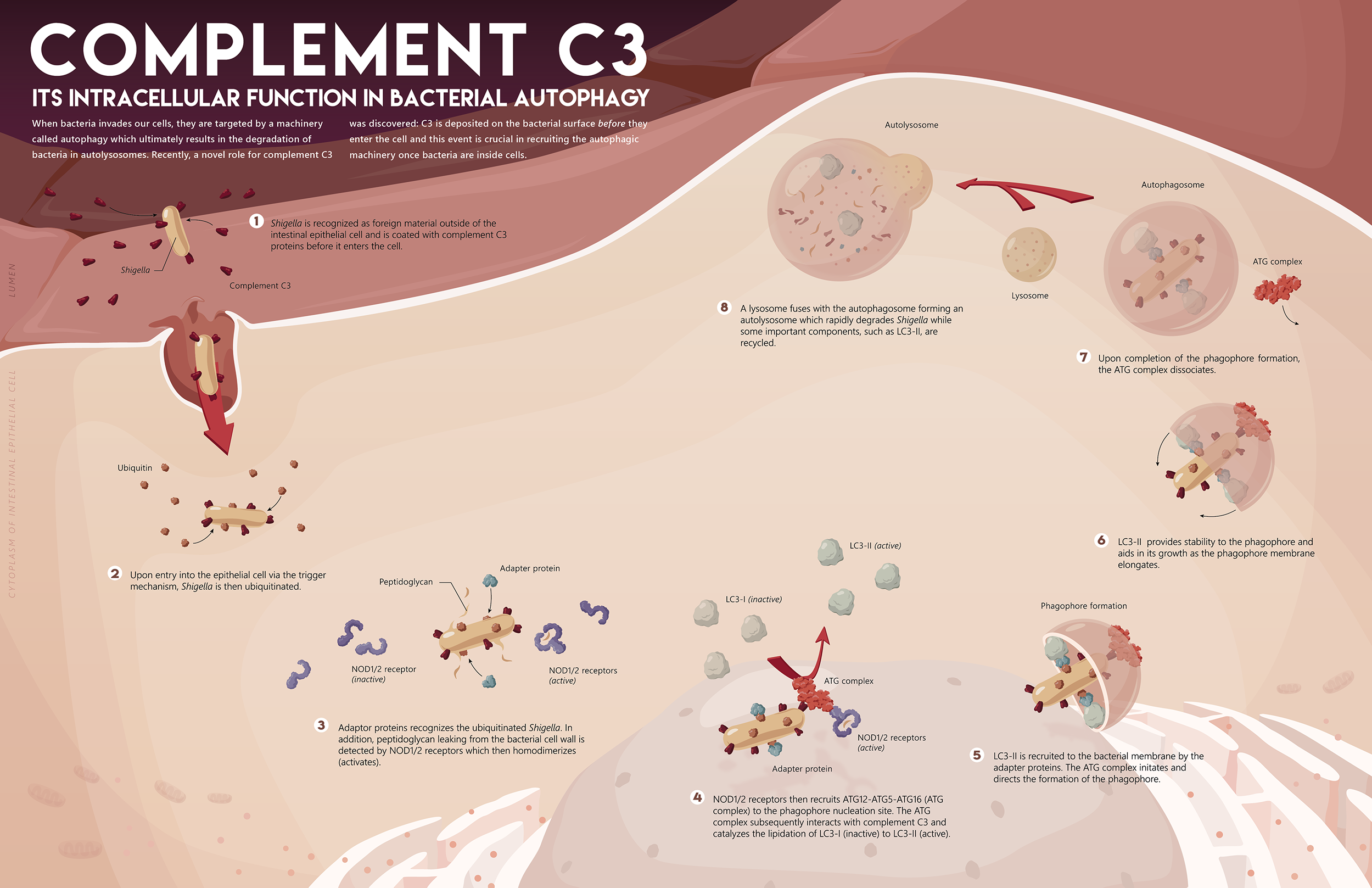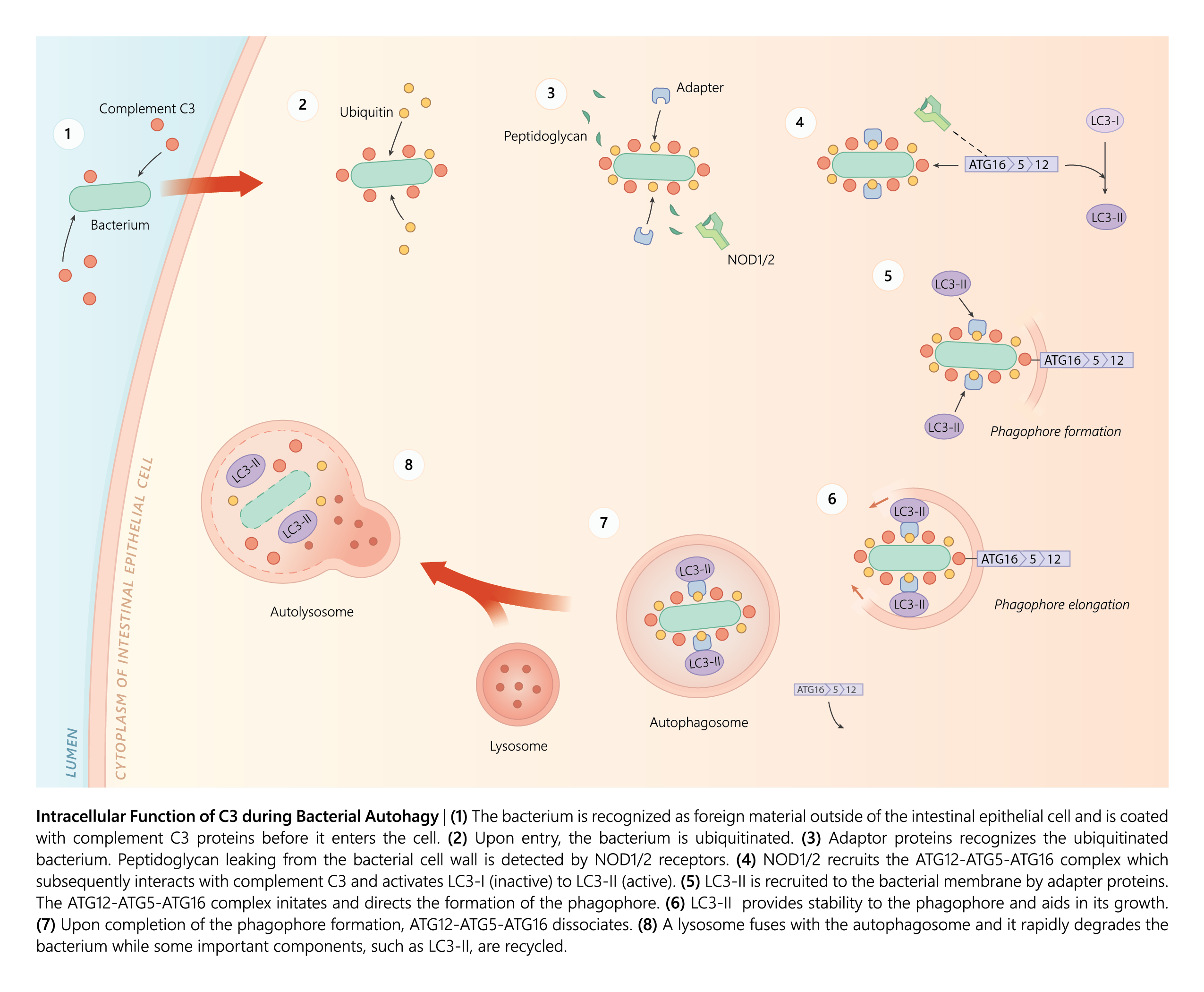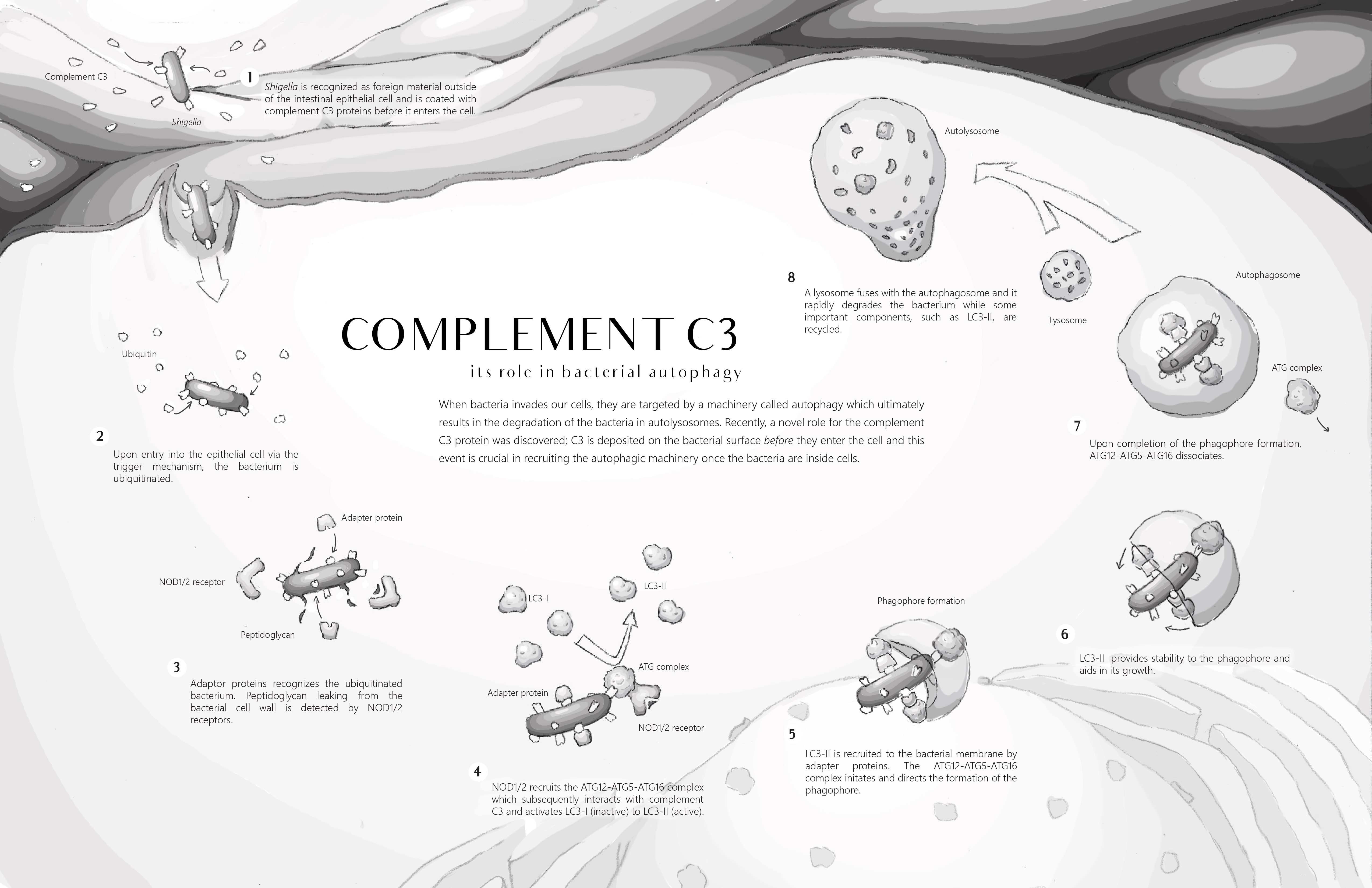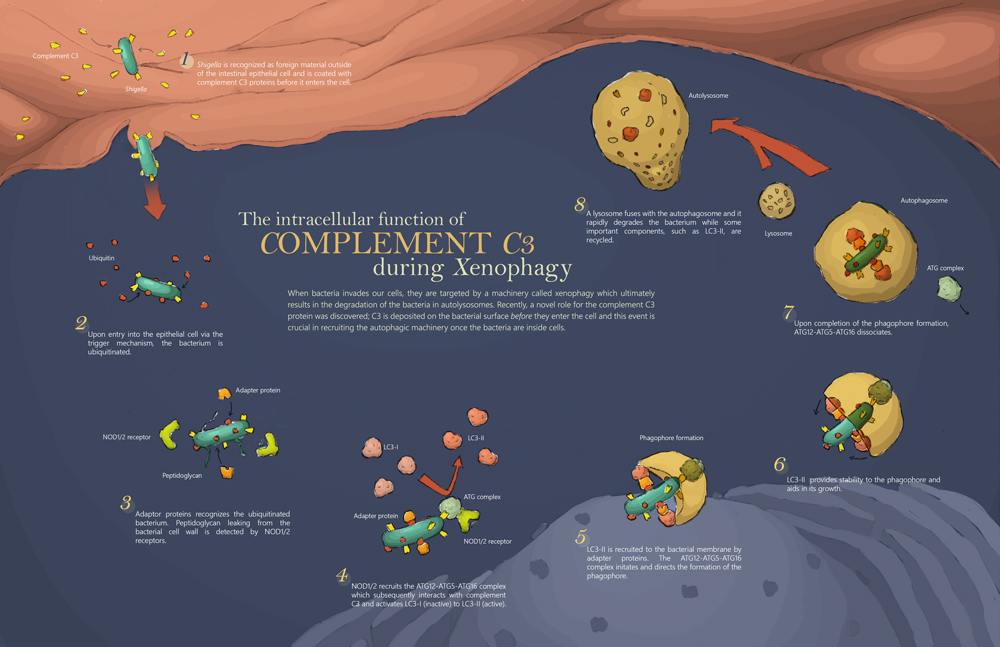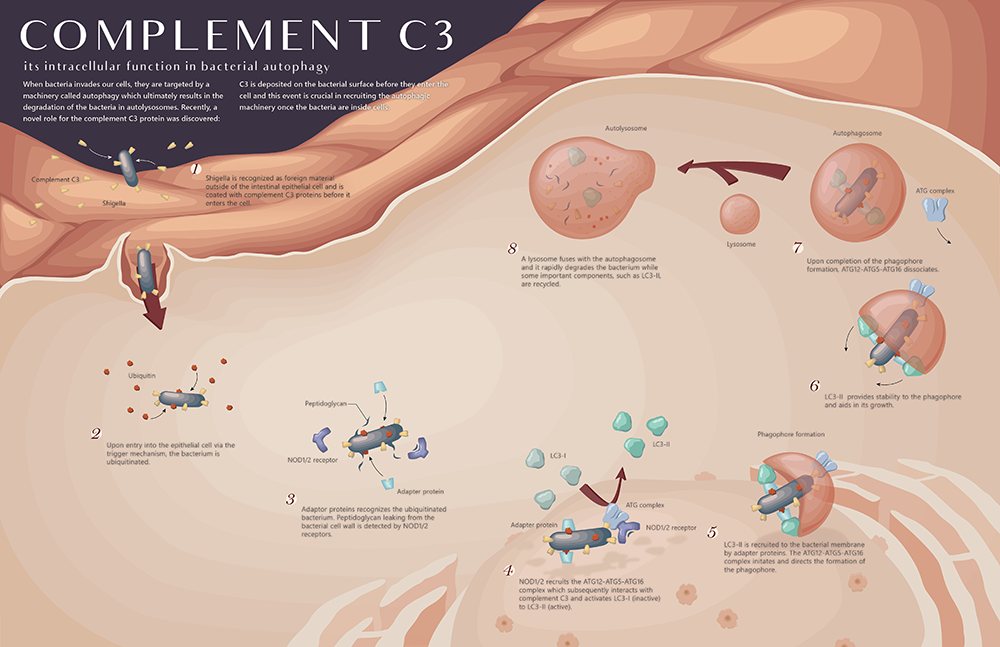Complement C3 and its Intracellular Function in Autophagy
Client
Prof. Michael Corrin, Biomedical Communications, University of TorontoDr. Stephen Girardin, Laboratory Medicine & Pathobiology, University of Toronto
Two-page spread depicting recent research on complement c3 by Dr. Girardin.
Audience
Undergraduate-level understanding of life science conceptsMedia
Adobe IllustratorDate completed
January 2017Process
2D Schematic
A 2D schematic version was created beforehand in order to simplify tasks and focus on understanding and visualizing the narrative rather than worry about executing a more complex illustration.
Re-iterations
There were multiple iterations with many smaller details changed. My biggest challenge with this piece was composition; there was simply so much information and it was so strictly stepwise that I found it quite difficult to provide a clear narrative without foregoing more innovative and complex compositions. I prepared some tonal studies and colour thumbnails before the final render.
Works consulted
Balzola, Federico, Charles Bernstein, Gwo Tzer Ho, and Charlie Lees. 2010. “Nod1 and Nod2 Direct Autophagy by Recruiting ATG16L1 to the Plasma Membrane at the Site of Bacterial Entry: Commentary.” Nature Immunology 11 (1): 55–63. doi:10.1038/ni.1823.
Bauckman, Kyle A., Nana Owusu-Boaitey, and Indira U. Mysorekar. 2015. “Selective Autophagy: Xenophagy.” Methods 75: 120–27. doi:10.1016/j.ymeth.2014.12.005.
Behrends, Christian, and Simone Fulda. 2012. “Receptor Proteins in Selective Autophagy.” International Journal of Cell Biology 2012. doi:10.1155/2012/673290.
Carlsson, Sven R, and Anne Simonsen. 2015. “Membrane Dynamics in Autophagosome Biogenesis.” Journal of Cell Science 128: 193–205. doi:10.1242/jcs.141036.
Ciuffa, Rodolfo, Trond Lamark, Abul K. Tarafder, Audrey Guesdon, Sofia Rybina, Wim J H Hagen, Terje Johansen, and Carsten Sachse. 2015. “The Selective Autophagy Receptor p62 Forms a Flexible Filamentous Helical Scaffold.” Cell Reports 11 (5). The Authors: 748–58. doi:10.1016/j.celrep.2015.03.062.
Huang, Ju, and John H Brumell. 2014. “Bacteria–autophagy Interplay: A Battle for Survival.” Nature Reviews. Microbiology 12: 101–14. doi:10.1038/nrmicro3160.
Kelsall, Brian. 2005. “Getting to the Guts of NOD2.” Nature Medicine 11 (4): 383–84. doi:10.1038/nm0405-383.
Knodler, Leigh A., and Jean Celli. 2011. “Eating the Strangers within: Host Control of Intracellular Bacteria via Xenophagy.” Cellular Microbiology 13 (9): 1319–1327. doi:10.1111/j.1462-5822.2011.01632.x.
Maekawa, Sakiko, Umeharu Ohto, Takuma Shibata, Kensuke Miyake, and Toshiyuki Shimizu. 2016. “Crystal Structure of NOD2 and Its Implications in Human Disease.” Nature Communications 7 (May). Nature Publishing Group. doi:10.1038/ncomms11813.
Moreau, Kevin, and David C. Rubinsztein. 2012. “The Plasma Membrane as a Control Center for Autophagy.” Autophagy 8 (5): 861–63. doi:10.4161/auto.20060.
Nakagome, Shigeki, Shuhei Mano, Lukasz Kozlowski, Janusz M. Bujnicki, Hiroki Shibata, Yasuaki Fukumaki, Judith R. Kidd, Kenneth K. Kidd, Shoji Kawamura, and Hiroki Oota. 2012. “Crohn’s Disease Risk Alleles on the NOD2 Locus Have Been Maintained by Natural Selection on Standing Variation.” Molecular Biology and Evolution 29 (6): 1569–85. doi:10.1093/molbev/mss006.
Otomo, Chinatsu, Zoltan Metlagel, Giichi Takaesu, and Takanori Otomo. 2013. “Structure of the Human ATG12~ATG6 Conjugate Required for LC3 Lipidation in Autophagy.” Nature Structural & Molecular Biology 20 (1): 59–66.
